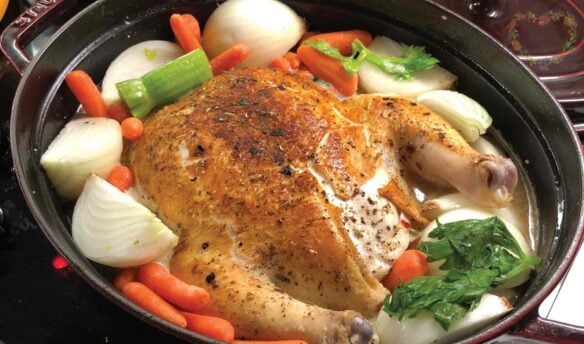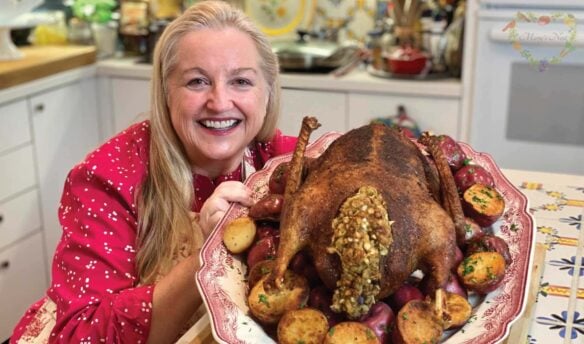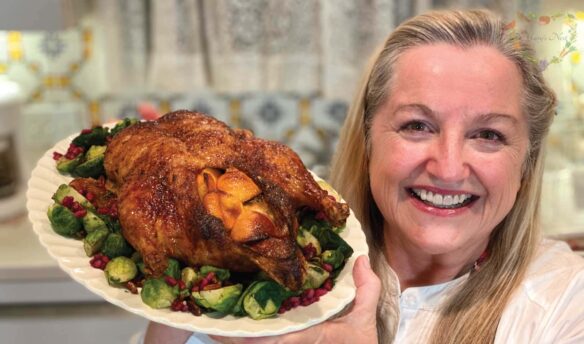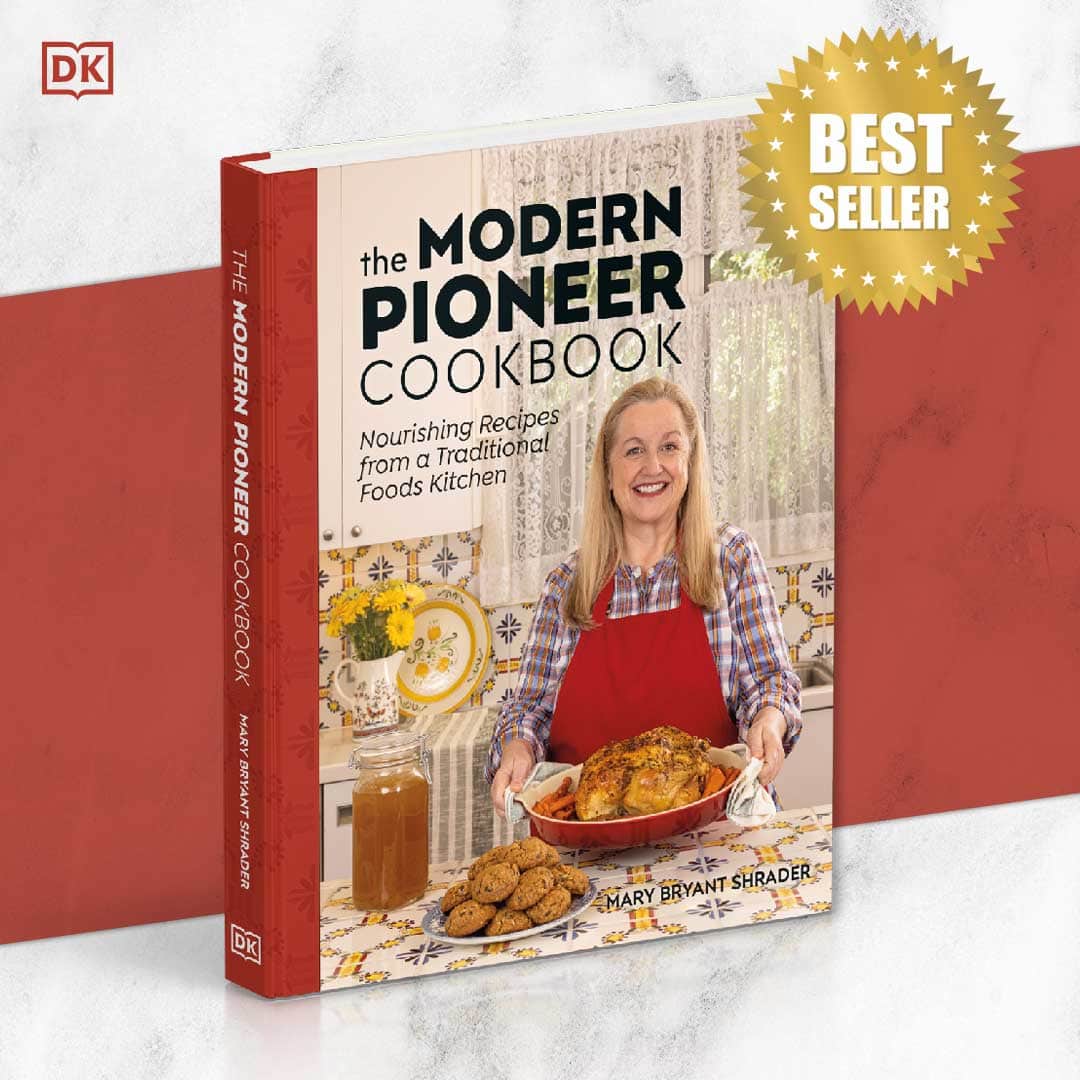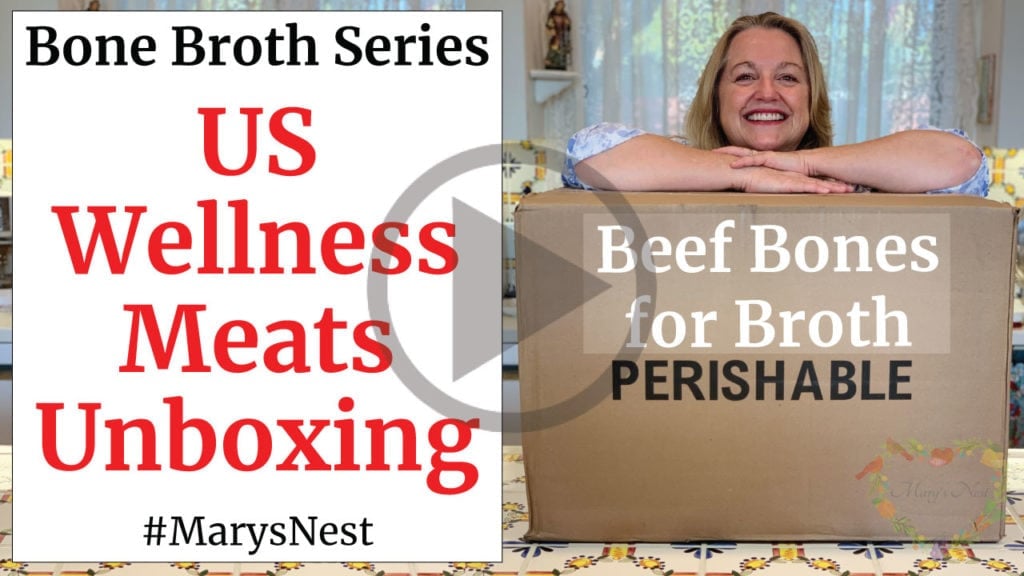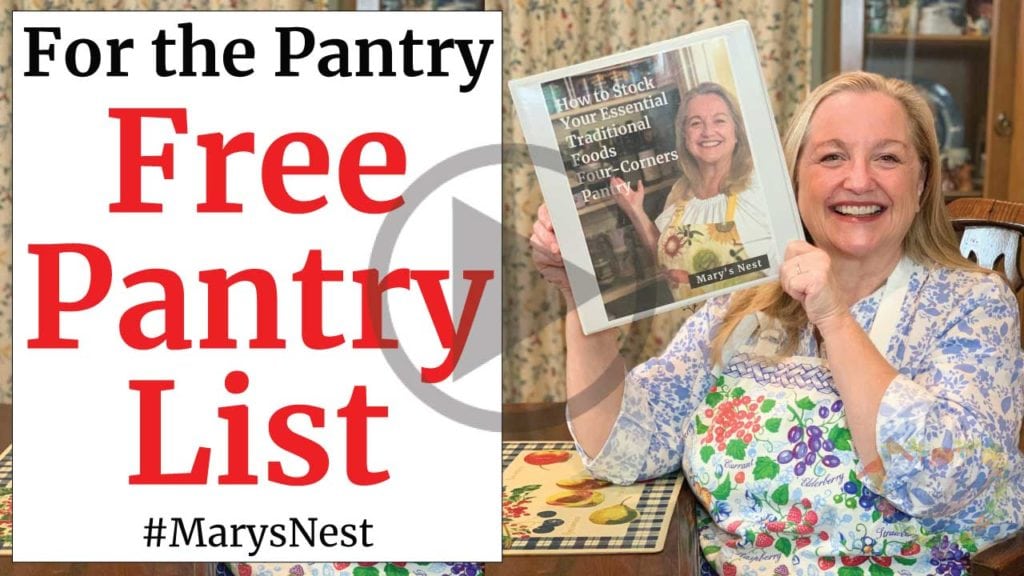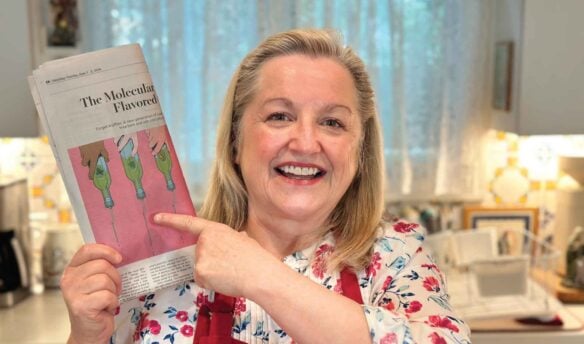What’s the best way to begin your traditional foods journey? I always recommend starting with a roast chicken because it’s a tasty and nutritious meal, and you can use the leftover chicken to make multiple recipes, including chicken bone broth and soups. Making a roast chicken gives you the lifelong culinary skills you can use to create your traditional food kitchen.
In today’s video, we’ll talk about the kind of chicken you should choose for roasting and how you can be sure you’re paying a fair price. We’ll focus on a Wall Street Journal article that also helps to reveal what’s behind the marketing text and logos we see on our chicken packages. I also show you prices of whole chickens at my local HEB grocery store in Central Texas.
Affiliates note: As an Amazon Associate I earn from qualifying purchases. My content may contain affiliate links to products and services. If you click through and make a purchase, I’ll receive a small commission. It does not affect the price you pay.
Table of Contents
- Are We Paying Too Much for Chicken Video
- Logos and Marketing on Chicken Packaging
- A Roast Chicken on Sundays
- Premium Chicken Brands
- Mary’s Chicken
- Which Chicken Should You Get?
- Roast Chicken and Poultry Recipes
- The Modern Pioneer Cookbook
- Looking for Free-Range Whole Chickens?
- Download Your Free 36-Page Pantry List
- Join the Traditional Foods Kitchen Academy
- Kitchen Academy Videos
- Shop for items used in this blog post or video
Are We Paying Too Much for Chicken Video
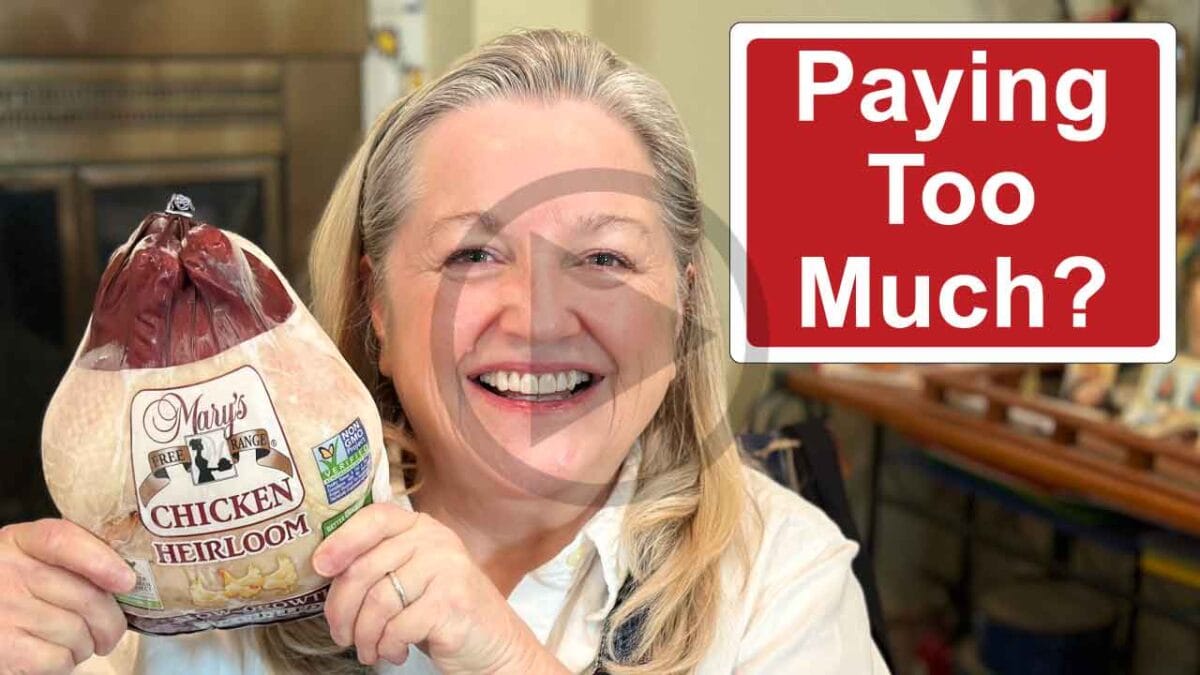
We still receive the printed Wall Street Journal (WSJ) because it’s an unhurried and traditional way to catch up on the latest news and discover new and fascinating topics. The printed format lets us enjoy reading without all the online and mobile device distractions competing for our attention.
The “Are You Paying Too Much for Chicken?” article by Elizabeth G. Dunn in their Saturday/Sunday, September 21-22, 2024 issue caught our eye. It’s a well-written article that discusses the verbiage and logos you see on chicken packaging and questions whether the production practices behind the marketing text and images warrant a higher price for the chicken. The article also recommends five premium chicken brands, which the author says are worth every penny.
In today’s video and blog post, I talk about this WSJ article and how it relates to our traditional foods kitchen.
Bonus Content
In today’s video, I also give you an update on the latest preparations for my new book that will be published in 2025. Additionally, I talk about my Panforte Italian Christmas Fruitcake recipe in the Oct/Nov/Dec 2024 issue of the Backwoods Home Magazine.
- Special Offer: The publisher of Backwoods Home and Self Reliance is offering my sweet friends 50% off subscriptions to their printed magazines. This is not a sponsored post. I love these publications, and I’m grateful you can get them at a discount.
For a complete list of my articles, webcasts, and podcast appearances, visit my Mary Bryant Shrader Around the Web page.
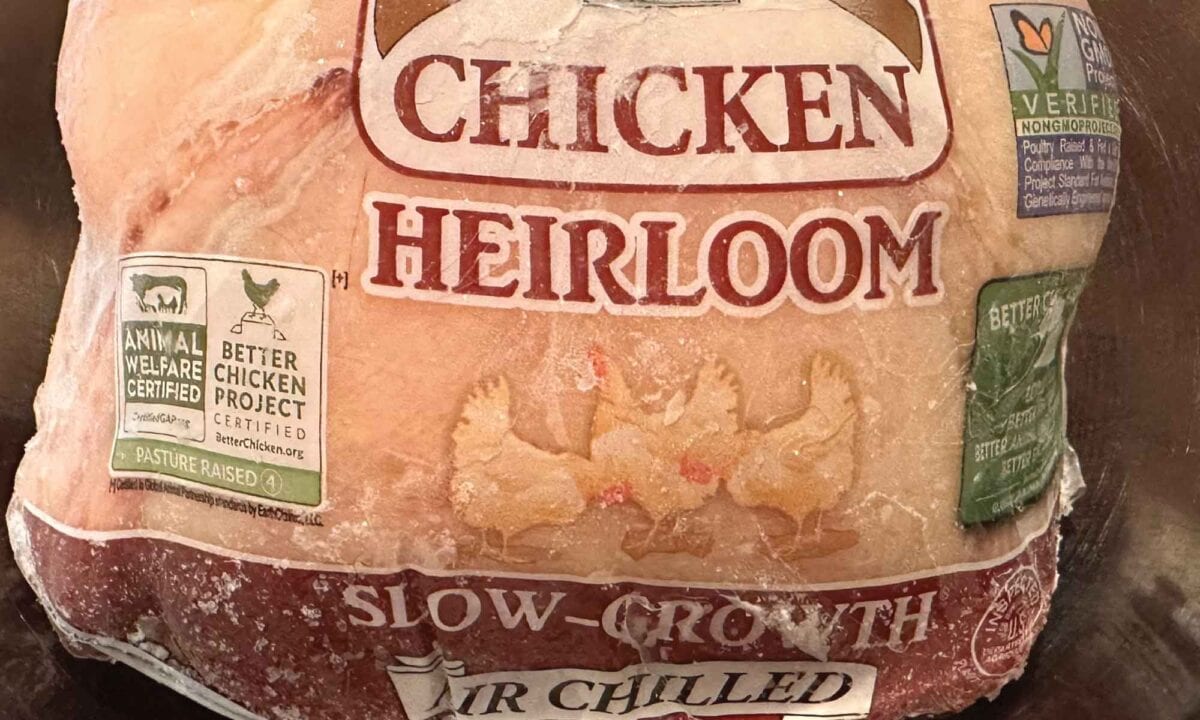
Logos and Marketing on Chicken Packaging
The WSJ article highlights logos and marketing text that you may see on your chicken packaging. See if you can find the following verbiage on your favorite chicken brand:
- All Natural – No artificial additives and minimally processed.
- Free-Range – Chickens have continuous access to the outdoors. However, that doesn’t mean the chickens will always choose to go outdoors.
- Pasture-Raised – Similar to free range, but with chickens spending the majority of their time on pasture. However, this text raises similar questions. What is the pasture like, and how often do the chickens choose to spend time on the pasture?
- Humanely-Raised – This text doesn’t mean much without a third-party certification, like Global Animal Partnership.
- All-Vegetarian Diet – Chicken feed doesn’t have slaughterhouse byproducts. However, the feed could include proteins like mealworms.
- Raised on Family Farms – Sadly, a very small fraction of today’s farms are family-owned. This text doesn’t mean much in terms of how the chickens are raised unless you know more about the farm and its practices.
- Cage-Free – This text means little because if you’ve seen a commercial facility, it’s a big barn with lots of birds. They’re not in cages, but they are packed pretty close together.
- Non-GMO – Corn and soybeans fed to chicken are not genetically modified. Chickens in the United States are not GMOs themselves.
- Air-Chilled – Chickens are chilled in the air and not in chlorinated water. Air-chilled chickens are supposed to have a better flavor and texture.
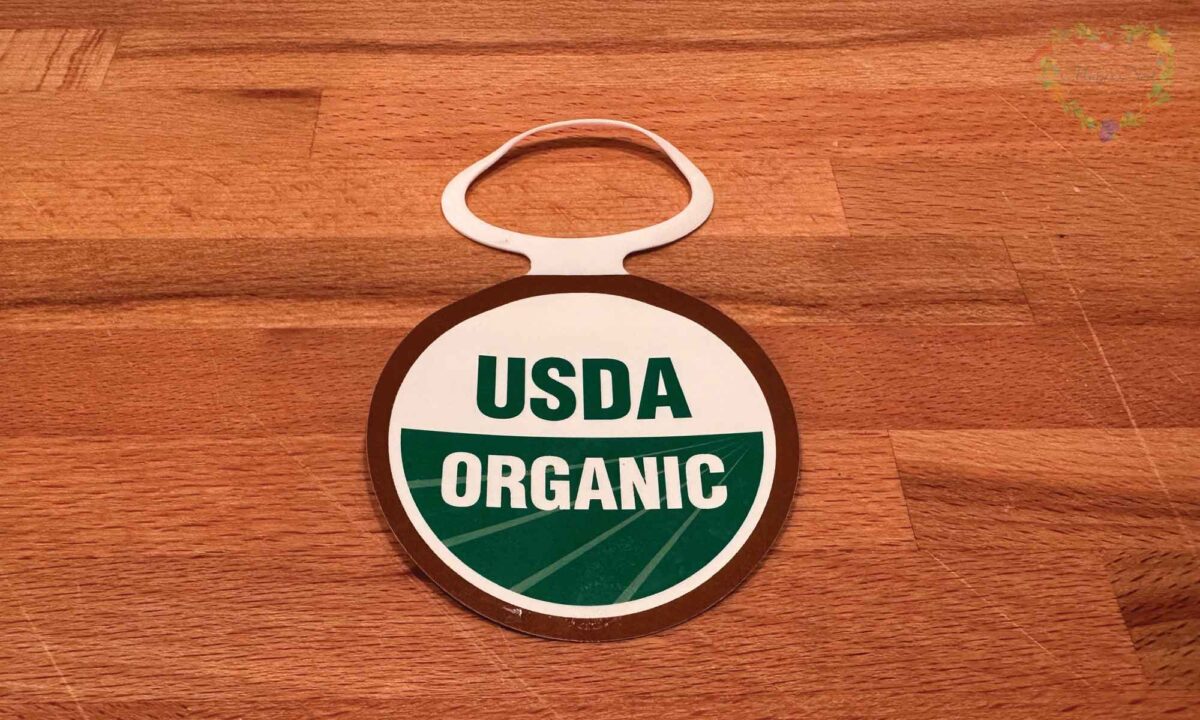
USDA Organic
If you’ve seen the United States Department of Agriculture (USDA) organic logo, you may think the food with the logo is entirely organic. That’s not necessarily the case.
Manufacturers can affix the USDA Organic label to a product with a minimum of 95 percent organic ingredients. Only the USDA “100 Percent Organic” label indicates that the product contains 100 percent organic ingredients. (Note that the ingredients exclude salt and water, which the USDA considers natural.)
Also, note that organic doesn’t mean pesticide-free. The USDA organic regulations titled The National List of Allowed and Prohibited Substances, lists the types of herbicides and insecticides that are allowed and those that are not.
A Roast Chicken on Sundays
My mom taught me the value of a roast chicken as the centerpiece of a family meal. Growing up in the 1950s and 1960s, I recall chickens being more expensive than beef and not as plentiful as they are now. I also remember being able to choose from a wider diversity of chicken types.
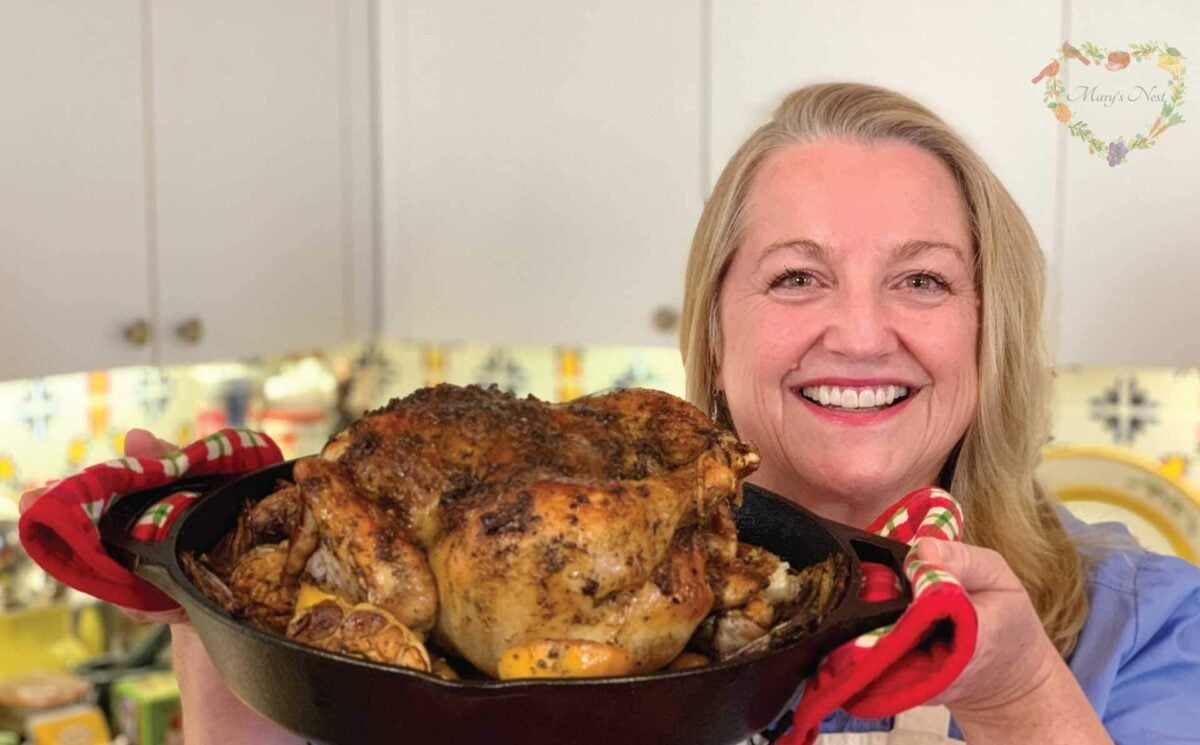
My mom would always pick out a “roasting” chicken since they were large and perfect for slow oven cooking. You don’t see these roasting chickens much anymore. It’s easy to find “broilers” nowadays since they are younger and smaller chickens. Capons are close to the large roasting chickens I remember, but they’re usually more expensive than their broiler counterparts.
My mom used to prepare a big family meal on Sundays with a roast chicken and plenty of vegetables. (And I carried on the tradition of making a roast chicken on Sundays with my family.) Afterward, she would make bone broth from the carcass and scraps, then make soup out of the bone broth and leftover chicken.
Traditional Meals Throughout the Week
We usually ate various leftovers on Mondays and Tuesdays. On Wednesdays, we typically would have beef liver and onions. You don’t see that dish much anymore, which is too bad since beef liver is a nutrient-dense meal.
Note: If you want to bring liver back to your household, I have a fried beef liver recipe your children and husband would love! And if you find a whole chicken that includes the heart and gizzard giblets, those are also nutrient-dense foods you can enjoy cooked by themselves or secretly mixed into a gravy.
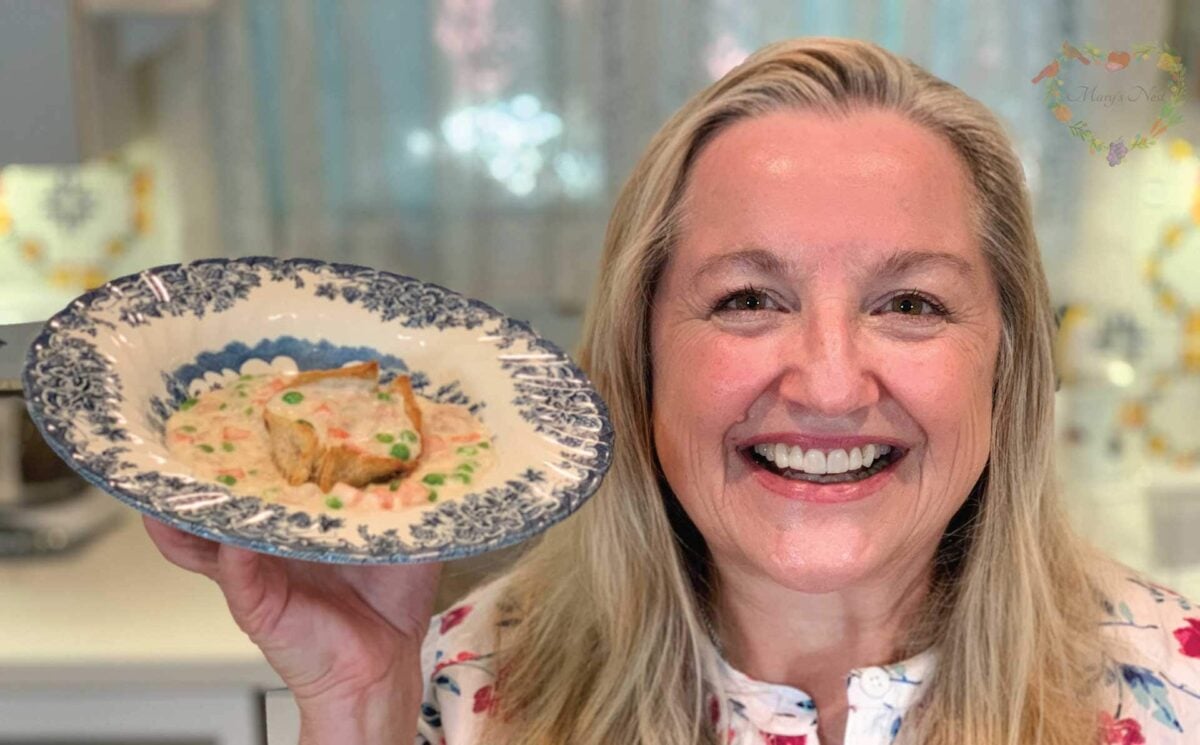
On Thursdays, we would have a cut of some beef followed by a fish dish on Fridays. (My Tuna Boat Surprise recipe will take you back to mid-century school lunches when it was a tradition to eat fish in our school cafeteria in addition to at home.) On Saturdays, we might enjoy some of the leftover meat of the week with baked beans or some other tasty side.
As you can see, my mom always used up as much of our food and leftovers as she could. Nothing went to waste, which is one of the hallmarks of a traditional foods kitchen.
- Julia Child’s To Roast a Chicken video (Also reviews the different types of chickens)
- What is the Difference Between Broth, Stock, and Bone Broth?
Premium Chicken Brands
The WSJ article discusses most chickens being in the $1.99 – $5.99 per pound price range. Considering the packaging logos and verbiage, here are the premium chicken brands the WSJ author recommends and where they are typically located in the United States:
- Ball & Evans – Nationwide
- Farmer Focus – Eastern US
- LaBelle Patrimoine – East Coast and Midwest
- Mary’s Chicken – Western US
- Pasturebird – Selected retailers
If these premium chicken brands are unavailable in your area, you can also get many of them online. (Be sure to read the WSJ article to understand why they recommend these brands.)
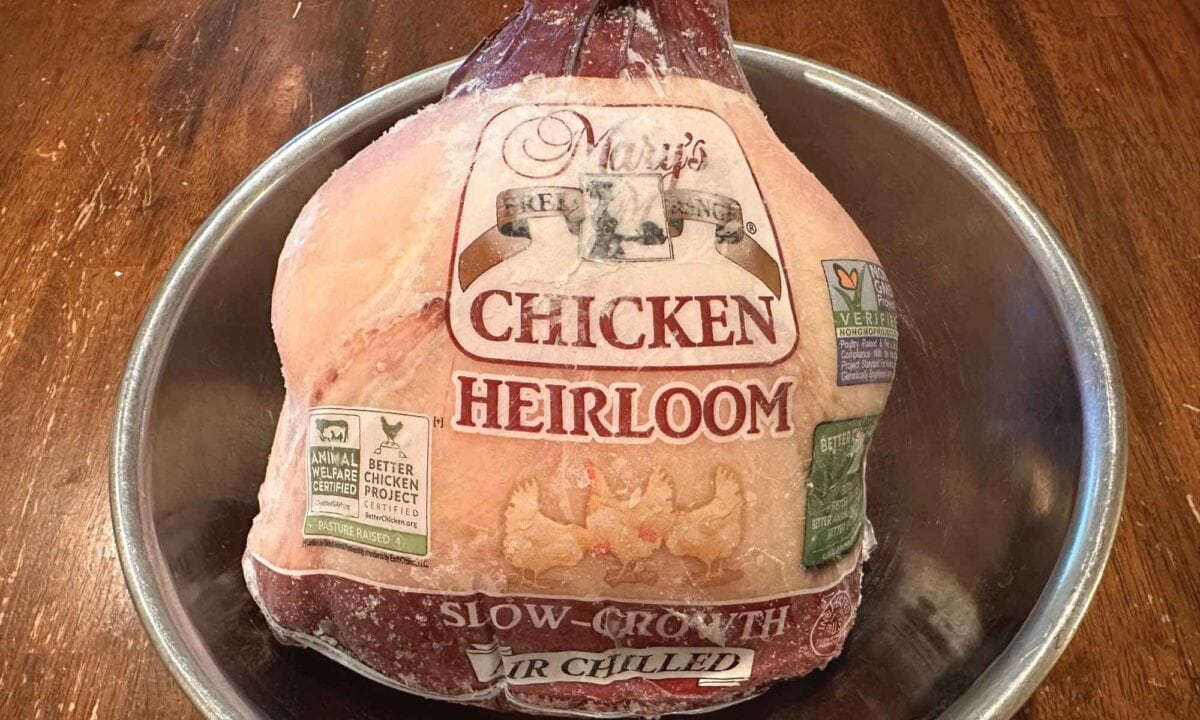
Mary’s Chicken
When I can, I like to get Mary’s Chicken, and no, it’s not just because we share the same name. I like Mary’s Chicken because of their production practices and because they’re always tastier than their feedlot counterpart. When I can get Mary’s Chicken on sale, I like to freeze it for a future meal if I can’t roast it right away.
In my video, I talk about the Mary’s Chicken I have in my freezer. As you’ll see, it has the following attributes:
- Air Chilled
- Animal Welfare Certified
- Better Chicken Project Certified
- Free range
- Legacy breed/Heirloom – Implies the chicken’s genetics go back a long way in time. Some dietitians believe we can digest heirloom food better.
- Non-GMO
- Organic
- Slow growth
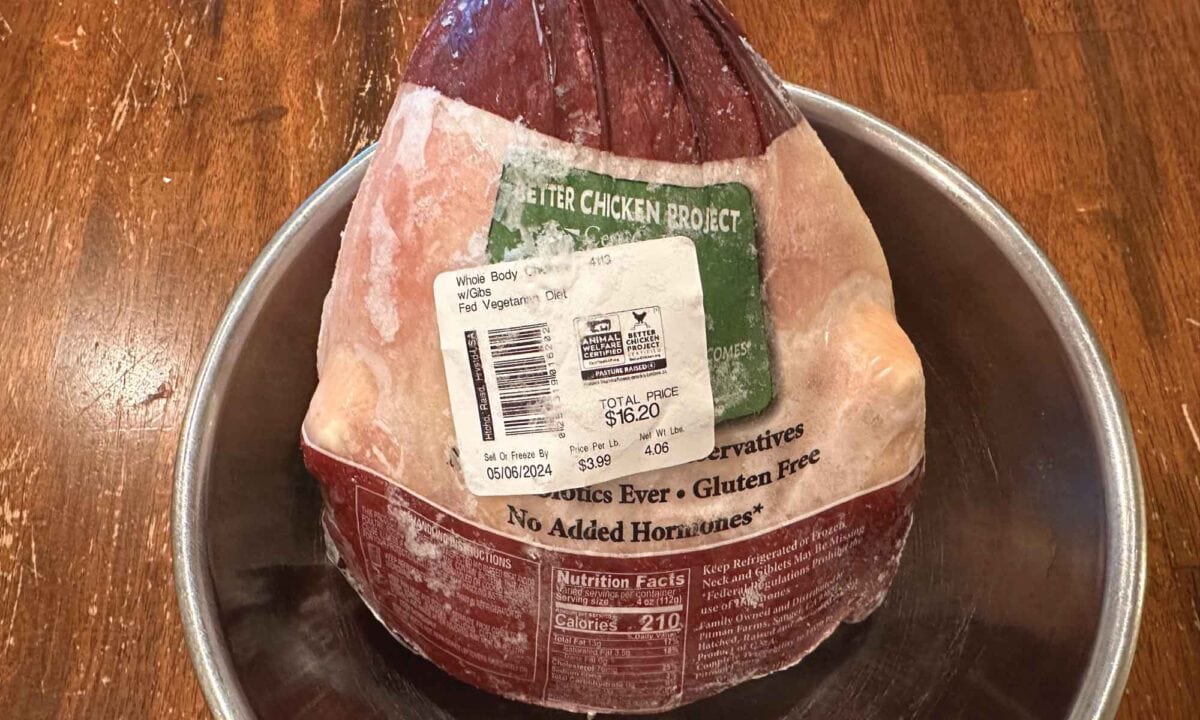
I like Mary’s Chicken because it is always flavorful. Whenever I peel back the packaging, I notice that the chicken’s skin is yellow, which typically means it is high in Conjugated Linoleic Acid (CLA). As I’ve discussed in previous videos, this fatty acid has many health benefits. You can learn more about CLA in the following National Institutes of Health (NIH) article:
Which Chicken Should You Get?
I paid $3.99/lb for my four-pound Mary’s Chicken, which the WSJ article says is about average for this premium brand. (The WSJ article says you can find a standard commercially raised chicken with an average retail price of $1.99/lb at your local grocery store.)
Here are a few chickens I found at my local HEB grocery store. (And wonderfully, you have a few to choose from under the national retail price.)
HEB Hill Country Fare Young Chicken
- HEB Hill Country Fare Young Chicken (with giblets and neck): $1.39/lb
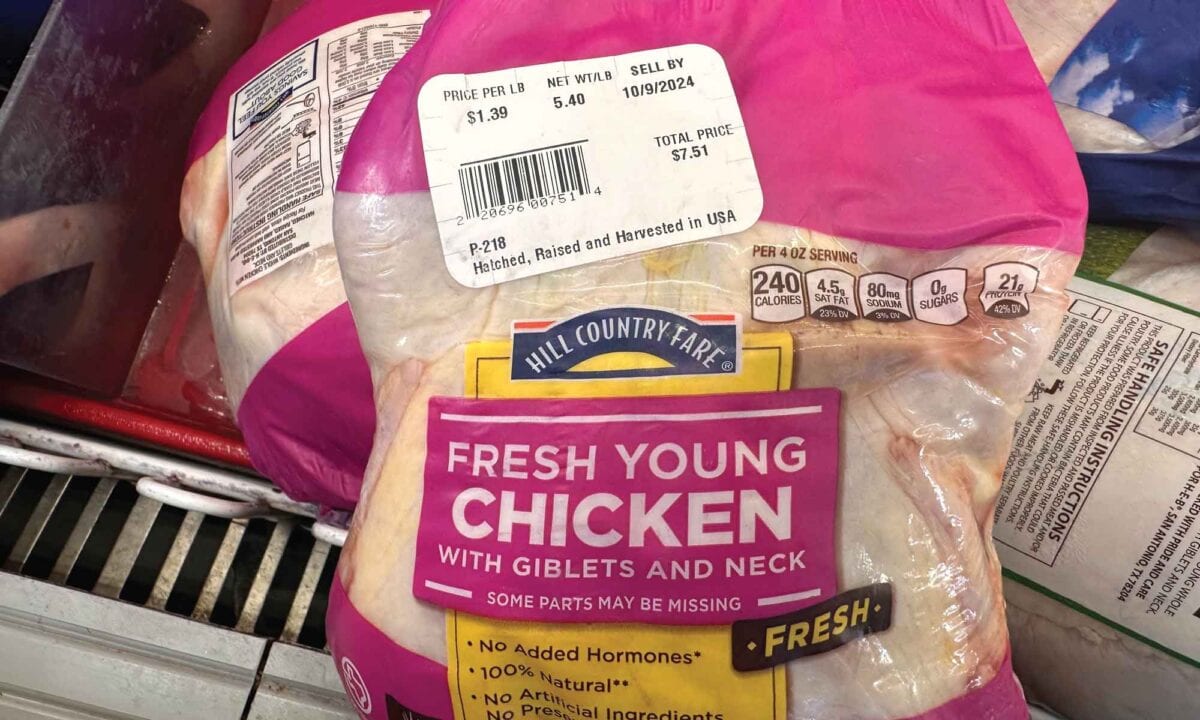
HEB Natural Whole Roasting Chicken
- HEB Natural Whole Roasting Chicken (with giblets and neck): $1.59/lb (As to breed, this is a “broiler” chicken and not an actual “roaster” chicken.)
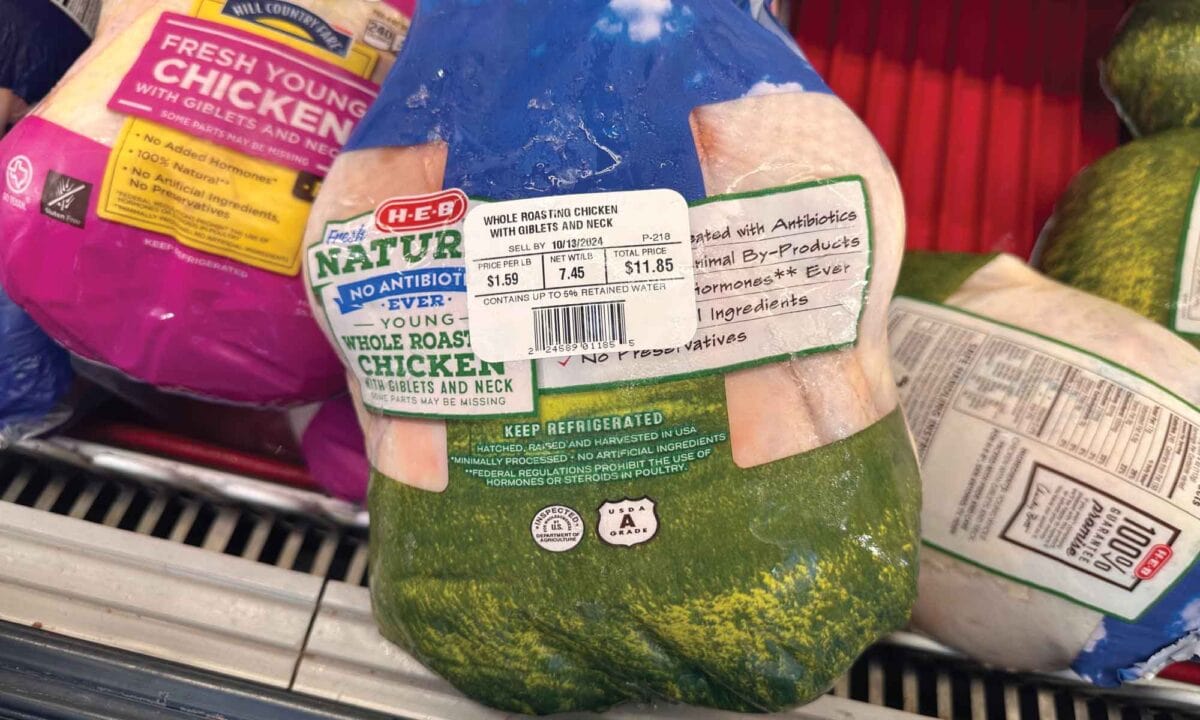
HEB Central Market Air-Chilled Organic Young Chicken
- HEB Central Market Air-Chilled Organic Young Chicken: $4.29/lb
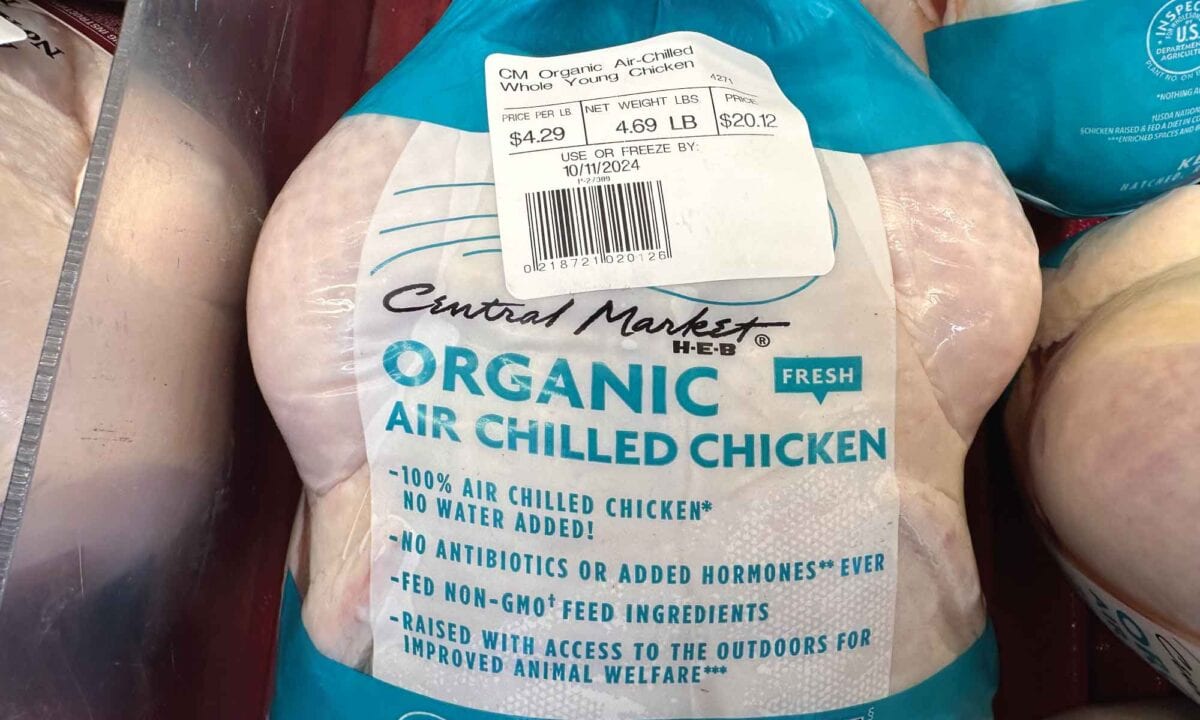
Get the Best Chicken for Your Budget
So which chicken should you get? The best one to get is the one that’s within your budget. So if you are attracted to a brand with the marketing text you’re looking for that’s backed up with verifiable practices, go with the organic, heirloom, air-chilled chicken if it’s in your budget. However, be sure to get your money’s worth and use all of it for bone broth and future meals. Get the most out of the chicken that gave its life to give you and your family nourishment.
However, if you can only afford the lower-priced whole chicken, get that one! It’s a lot better to have a home-cooked roast chicken with delicious carrots, onions, and potatoes than going through the drive-through lane of your local fast food outlet.
Your roast chicken will give your family love, nourishment, and, hopefully, a new family tradition of sitting together on Sundays for the best meal ever!
Roast Chicken and Poultry Recipes
How to Make Praised Chicken
Discover this easy-to-make poached and braised chicken that’s adapted from a Nigella Lawson recipe.
How to Make the Best Roast Goose with Sage and Onion Stuffing and a Port Wine Cherry Sauce
Make this holiday meal like Mrs. Cratchit did in A Christmas Carol by Charles Dickens.
How to Make the Best Roast Duck with Orange Marmalade Glaze
Enjoy this wonderful specialty poultry for your celebratory or holiday meal.
Start Your Traditional Foods Journey
Part of my passion for keeping traditional cooking skills alive—in addition to my online cooking school on YouTube—is writing cookbooks. My first book, The Modern Pioneer Cookbook published by Penguin Random House (PRH), is full of my traditional foods recipes that show you how to create a traditional foods kitchen.
Be sure to order your copy of my bestselling book, The Modern Pioneer Cookbook, to start your traditional foods journey. And stay tuned for my next cookbook that will be published by PRH in 2025!
Looking for Free-Range Whole Chickens?
If you can’t find a whole chicken that you’d enjoy from your neighborhood supermarket or farmer’s market, check out US Wellness Meats for free-range whole chickens and more.
- Use my one-time discount code MARYNEST and my link to save 15% off regular-priced items on your US Wellness Meats order. You can shop for a variety of products, including:
- Free-Range Whole Chickens
- Chicken Feet (great for creating a gelatinous bone broth!)
- Beef Bones
- Grass-Fed Beef
This post is not sponsored. I’m a long-time customer of US Wellness Meats because I have always been impressed by the quality of their products. Check out my US Wellness Meats unboxing video to see the types of products you can get, including bones for beef bone broth!
Download Your Free 36-Page Pantry List
For an extensive list of the traditional foods you can make and purchase to stock your pantry, be sure to download my free 36-page Traditional Foods Pantry List. This comprehensive eBook is full of links to recipe videos, helpful articles, and more!
Join the Traditional Foods Kitchen Academy
Are you looking for more traditional foods videos? If so, I invite you to join the Traditional Foods Kitchen Academy. Members of this optional paid YouTube community get access to exclusive videos and other members-only perks. Plus, your YouTube comments include a special members-only badge.
Kitchen Academy Videos
Traditional Foods Kitchen Academy 2025 Member Update
I chat about what’s in store for my Traditional Foods Kitchen Academy in 2025.
Baking with Ancient Grains in the Traditional Foods Kitchen
Bake with Einkorn, Emmer, and Spelt—nutritious ancient grains that bring rich flavor and tradition to your favorite recipes.
Discussing the Secrets to Perfect Green Herbal Oils
Let’s talk about the popularity of flavored herbal oils.
Stay in Touch with Mary’s Nest
- Subscribe to My YouTube Channel for Traditional Foods Videos (Free) - When you subscribe, be sure to click on the notification bell that will let you know each time I upload a new video.
- Subscribe to Mary’s Traditional Foods Newsletter (Free) - Get a free 36-page eBook for signing up: How to Stock Your Essential Traditional Foods Four-Corners Pantry.
- Join the Traditional Foods Kitchen Academy - For more detailed videos and exclusive members-only perks, join my YouTube membership community.
- Order The Modern Pioneer Cookbook - Get a hardcover book of Mary's nourishing recipes from a Traditional Foods Kitchen. This bestselling cookbook is published by Penguin Random House with their DK imprint.
- Preorder The Modern Pioneer Pantry - Be one of the first to get Mary's hardcover book about preserving food and making delicious meals from your Four Corners Pantry. Mary's second cookbook is also published by Penguin Random House.
I look forward to having you join me in my Texas Hill Country Kitchen!
Shop for items used in this blog post or video
Favorite Kitchen Supplies
- Favorite Aprons
- Spice Grinder
- Countertop Burner (On my kitchen island in many recipe videos.)
- Handheld Vacuum Sealing System
- Vacuum Lids
- Whisk
- Silica Gel Packets (Helps keep moisture from building up in your mix)
- Cast Iron Dutch Oven
- 8-Quart Slow-Cooker
- Fat Separator (Clever kitchen device to help you decant bone broth)
- Flour Sack Towels
- pH Strips (Helps you check on the acidity of your vinegar)
Amazon Shop and Shopping Guide
- Visit Mary’s Nest Amazon Shop
- Visit my Shopping Guide page
Get up to 15% off for stocking your Traditional Foods Pantry and equipping your Modern Pioneer Kitchen, including discounts from US Wellness Meats, Farmhouse Teas, Lehman's, Masontops, Cultures for Health, Survival Garden Seeds, Redmond Real Salt, Plan to Eat, and More!
